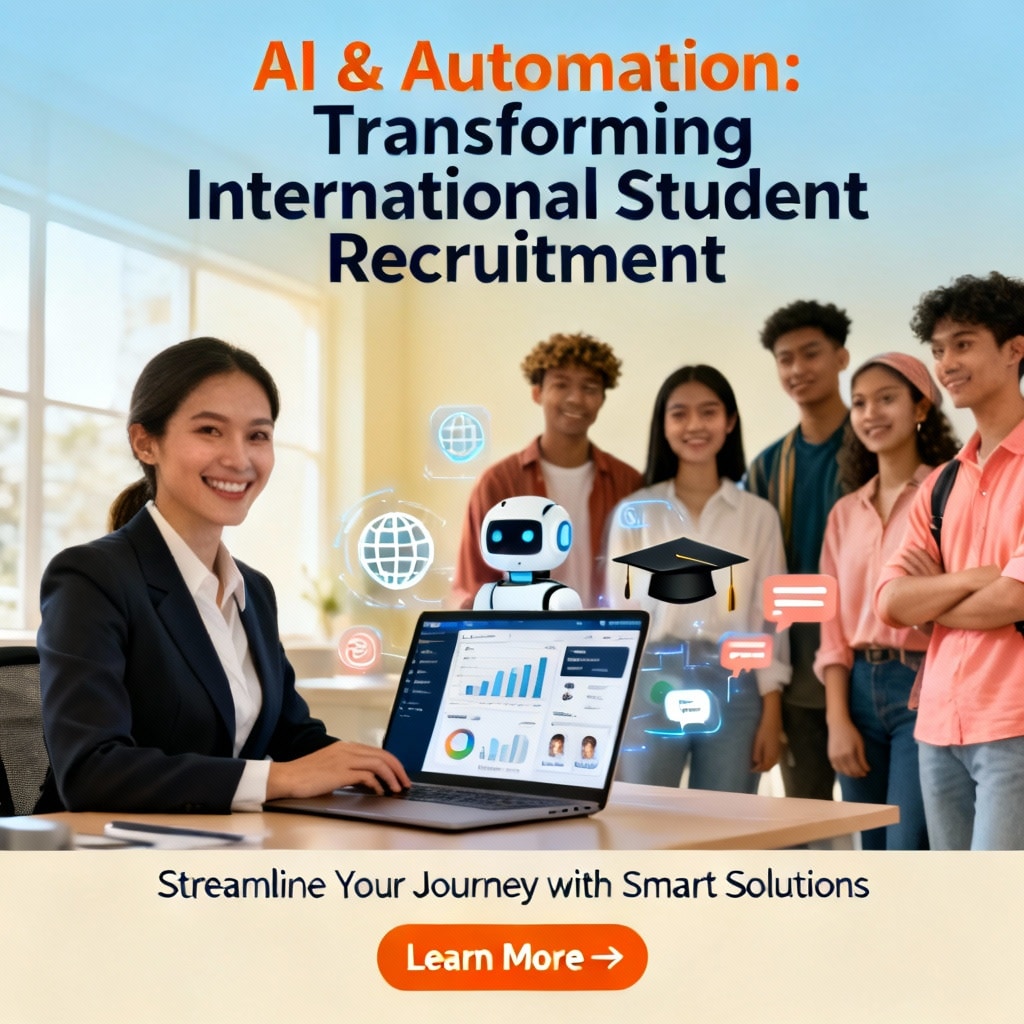AI and Automation in International Student Recruitment — Practical Strategies for Universities, Agencies and Admissions Teams
AI and Automation in International Student Recruitment
AI and Automation in International Student Recruitment are no longer experimental add-ons — they are strategic imperatives for universities, agencies and admissions teams operating in a competitive global market. For HR and marketing professionals in education, the question is not whether to adopt automation, but how to integrate AI responsibly to improve recruitment efficiency, personalize outreach, and increase conversion rates while preserving quality and compliance.
This post explains how AI and automation reshape each stage of the international recruitment funnel, presents an actionable implementation roadmap, outlines measurable KPIs, and shows how Study in Turkiye’s network and solutions can accelerate your objectives. Practical examples reference leading Turkiye institutions and program areas so you can see how these technologies apply to real recruitment priorities.
Why AI and automation matter now
- Faster decision cycles: Institutions face larger applicant volumes and need automated triage to prioritize high-fit prospects.
- Personalization at scale: Prospective students expect tailored content across channels and languages.
- Resource optimization: Admissions teams can redeploy human capacity from routine tasks to high-value counseling and partnerships.
- Competitive differentiation: Universities that use intelligent automation capture attention earlier and maintain higher conversion rates.
Core recruitment use cases (what to automate first)
Lead capture and multilingual engagement
- Implement AI-powered chatbots on program pages and social channels to answer eligibility, fee and scholarship questions 24/7.
- Use natural language processing (NLP) to provide responses in multiple languages and route complex queries to human counselors. For health and medical program inquiries, bots can offer initial information about clinical capacity and program structure for institutions like Istinye University and Medipol University.
Automated lead qualification and scoring
- Use machine learning models to score prospects by fit and propensity to enroll based on academic background, stated preferences and engagement patterns.
- Automate prioritization so admissions officers focus on high-probability applicants for competitive programs such as medicine or engineering at universities like Ozyegin University and Yildiz Technical University.
Application triage and eligibility checking
- Deploy rule-based automation to pre-check documents and minimum eligibility (GPA thresholds, language scores).
- For program-specific pathways (e.g., medicine at Istinye University or Medipol University), create customized eligibility workflows that flag missing prerequisites automatically.
Personalized nurturing and content orchestration
- Build automated nurture tracks that deliver program-relevant content based on a prospect’s interests: clinical placements for medical applicants, internship pathways for engineering, or industry linkages for business programs at institutions such as Bahcesehir University and Bilgi University.
- Use behavioral triggers (web visits, email opens, webinar attendance) to switch prospects between content streams without manual intervention.
Automated admissions workflows and decisioning
- Use rule-based engines to assemble files for review, generate interview invitations, and trigger conditional offers.
- Integrate automation with enrollment systems to issue offer letters, manage deposits and begin visa/onboarding checklists.
Post-offer onboarding and retention automation
- Automate pre-arrival communications (visa steps, housing options, pre-enrolment orientation) and connect students with peer mentors.
- For campuses receiving international cohorts, coordinate pre-arrival testing or orientation specific to programs at universities like Beykent University and Uskudar University.
Implementation Roadmap: Quick Wins to Long-Term Transformation
Quick wins (0–3 months)
- Deploy a multilingual chatbot on high-traffic program pages.
- Create automated email sequences for lead nurturing and application reminders.
- Build a simple lead scoring model to prioritize high-fit inquiries.
Mid-term (3–9 months)
- Integrate CRM with document processing to reduce manual validation.
- Pilot AI-driven scoring on a single faculty or program and measure cohort yield.
- Automate offer generation and deposit management for streamlined onboarding.
Long-term (9–18 months)
- Implement end-to-end orchestration connecting recruitment, admissions, finance and visa workflows.
- Introduce advanced analytics for predictive enrollment and cohort performance.
- Establish governance processes for model audits, fairness checks and continuous improvement.
Key Performance Indicators to Measure
- Lead-to-application conversion rate
- Application-to-offer conversion rate
- Time-to-offer (average days from inquiry to decision)
- Cost-per-enrolled-student (across channels)
- Response SLA (chatbot/human handover)
- Yield rate (accepted to enrolled)
- Student satisfaction pre-arrival (NPS or survey scores)
Take the Next Step with Study in Turkiye
Adopting AI and automation in international student recruitment is a strategic move that yields measurable gains in efficiency, personalization and conversion — but success depends on careful design, transparent governance and human oversight. Study in Turkiye combines a deep understanding of international recruitment with hands-on support for implementation, partner networks and program-specific expertise to help institutions scale ethically and effectively.

